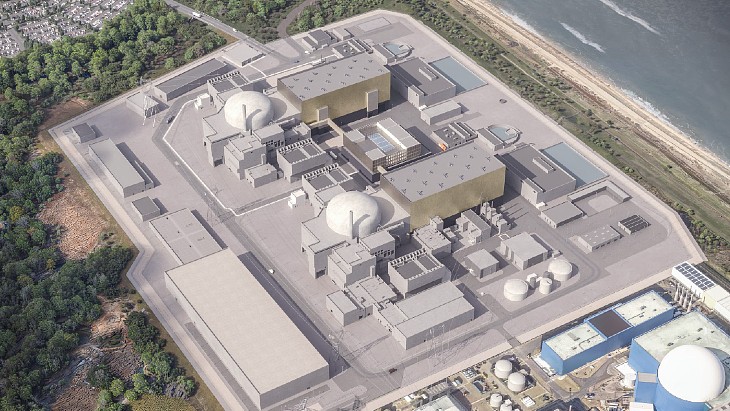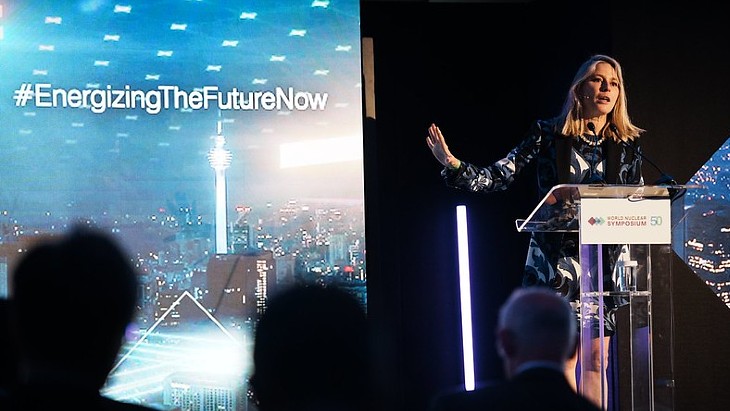The UK's National Nuclear Laboratory (NNL) announced yesterday that new research into nuclear energy generation proposes a "paradigm change" to support future reactor systems which 'eat up' used fuel without prior reprocessing to 'squeeze out' a factor of up to 20 times more energy from nuclear fuel. The systems could lead, NNL said, to a "significantly simpler" fuel cycle, an end to the accumulation of used fuel, and the elimination of any waste which would need to be stored for many thousands of years, while providing large-scale and secure low carbon electricity.
The research is described in a paper titled 'An innovative way of thinking nuclear waste management - Neutron physics of a reactor directly operating on SNF'. The paper, which was published on 27 July, was written by Bruno Merk, Dzianis Litskevich, Mark Bankhead and Richard J. Taylor.
"The nuclear waste problem is recognised as the key problem for an extensive use of nuclear reactors as a major carbon free, sustainable, and applied highly reliable energy source," the paper says. "Partitioning and Transmutation (P&T) promises to provide a technological solution for improved nuclear waste management. However, the P&T technologies have only been demonstrated on laboratory scale up to now."
Current strategies rely on traditional sodium cooled fast reactor systems and fuel cycle facilities which have been designed in the 1960s for the massive production of plutonium, it says.
A proof on the feasibility is provided based on "neutronics point of view", which "provides a solution to the major challenge, establishing sufficient breeding of fissile material from the inserted used nuclear fuel", it says.
For the initiation of the system a support of separated fissile material is required.
"Optimisation of the design should be performed defining an ideal initial composition, and the required efficiency of the salt purification system to reduce the time required for the transition to a fast reactor configuration. It is demonstrated that a self-sustained system can be achieved and an accumulation of minor actinides can be avoided," the paper says.
The result of such a design would be a system which neither requires new resources nor produces additional waste, providing an "interesting, innovative option" to the sustainability of a future nuclear system, it says.
"In addition to the desired sustainability, the request on an innovative waste management strategy based on P&T would be fulfilled in as an advantageous side effect," it adds.
This nuclear system also provides "enhanced resistance" against misuse of plutonium due to the plutonium composition, a "very limited possibility" for short-term insertion of fertile material and a design with plutonium remaining in the system without further separations.
"The sustainability is supported by the significantly reduced environmental impact of the fuel cycle, which is reduced to three steps, i.e. dissolving the SNF, reactor operation and storage of fission products. This is a significant reduction of complexity compared to [other] fuel cycle models required for P&T in traditional fast reactors. However, the new system requires a demand driven rethinking of the separation process to be efficient," it says.
"Even if the development of such a sustainable and innovative nuclear reactor provides a major challenge across engineering, it opens the chance to provide a substantial impact on the future of the worldwide energy production," it adds.
Researched and written
by World Nuclear News




_55530.jpg)
_42372.jpg)
_37521_70699.jpg)

_76087_55556.jpg)




